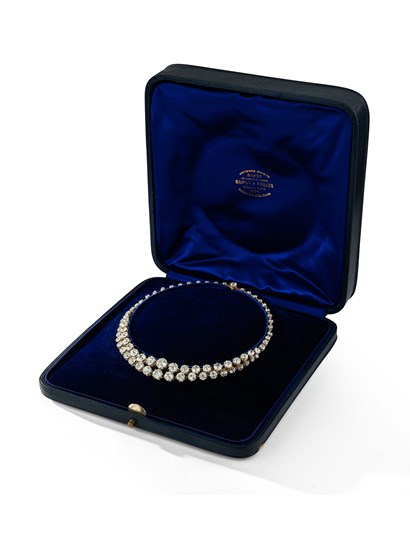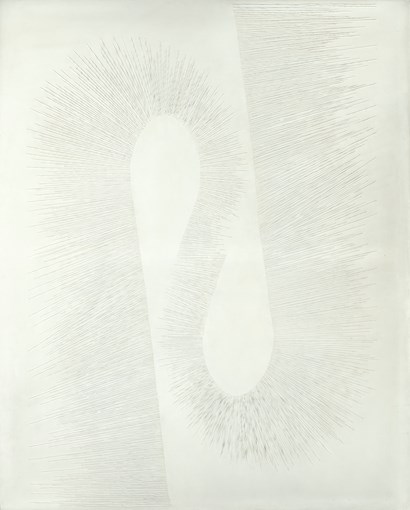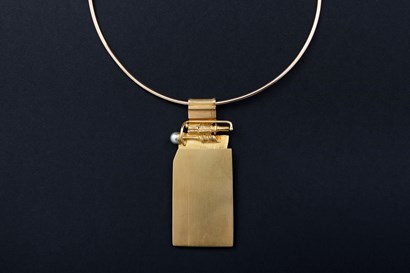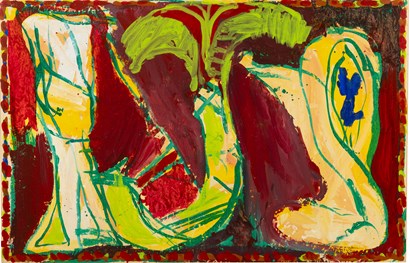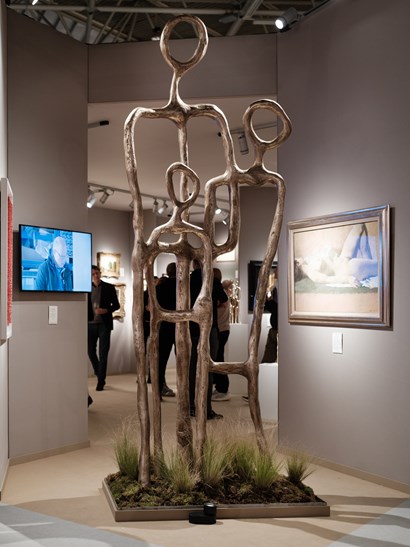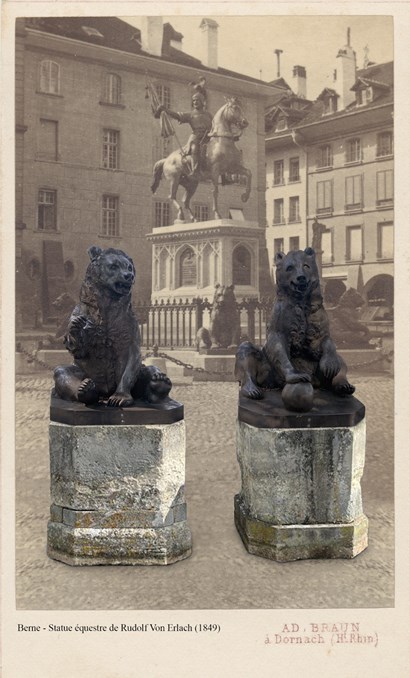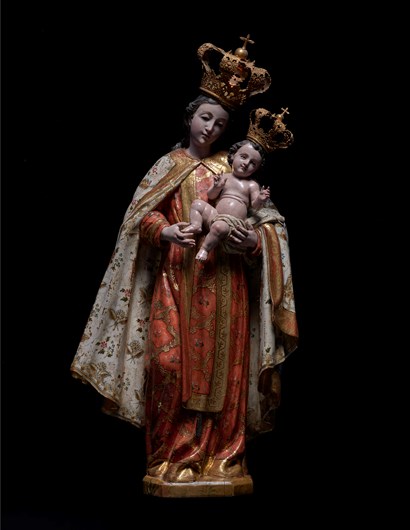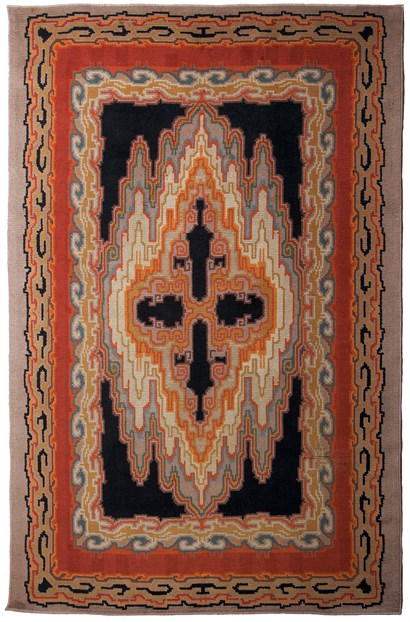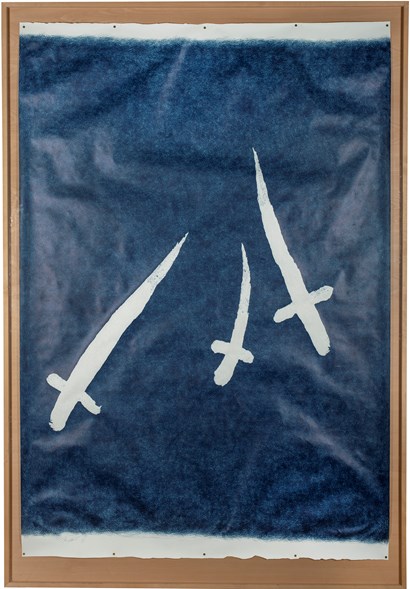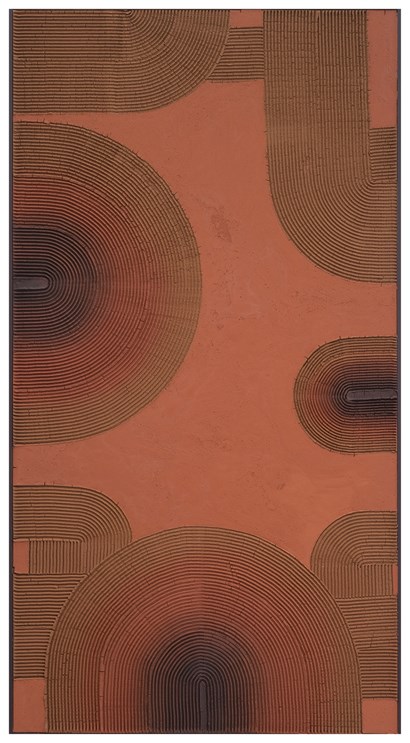This section will be available this Autumn.
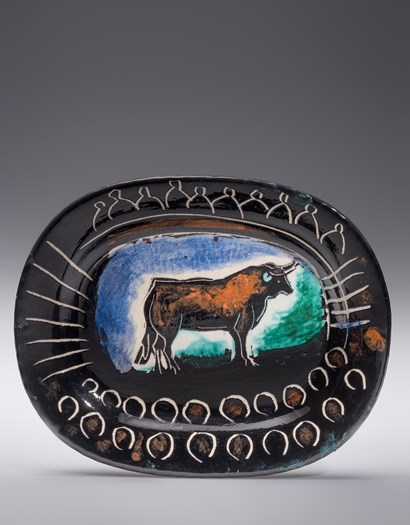
Dr. Lennart Booij Fine Art & Rare Items
pablo picasso
Pablo Picasso (Malaga 1881-1973 Mougins) Bull in the Arena plate, 1948 White earthenware with engobes H 32 x W 39 cm Edition Picasso Madoura, from the unnumbered edition of 450 Provenance: private collection, France Literature: A. Ramié, Picasso, Catalogue of the edited ceramic works 1947-1971, p. 52, n° 80
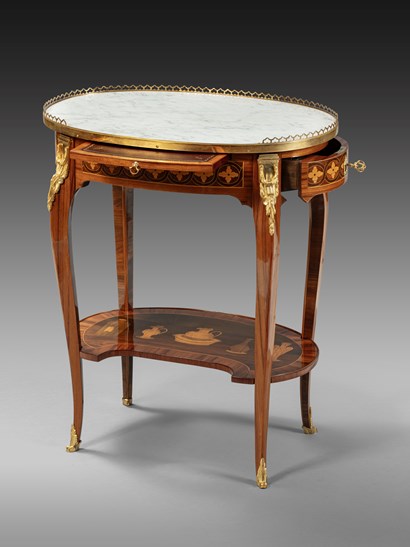
Franck Anelli Fine Art
charles topino
Charles Topino (France, 1742-1803) Oval writing table with white marble top Table in quatrefoil marquetry with rosewood surrounds, opens with a drawer and a sliding shelf, resting on curved uprights joined by a notched brace; white marble top with gallery Louis XVI period Stamped by Charles Topino, a cabinetmaker who became a master in 1773 H 72 x W 60 x D 41 cm Provenance: Neuilly sale, étude Ionesco, 7 July 1993, lot 63 Literature: this model is reproduced in Sylvain Barbier Sainte Marie, p. 57, fig 26

De Brock
serge poliakoff
Serge Poliakoff (Moscow 1900-1969 Paris) Composition Abstraite, 1968 Oil on canvas 161.9 x 129.9 cm Signed lower center: Serge Poliakoff Provenance: the artist's studio, Paris, France; collection Doctor Bachmann, Teufen, Switzerland; Galerie Malingue, Paris, France; private collection, Italy; Connaught Brown, London, UK; private collection, Belgium; De Brock, Knokke, Belgium Literature: Programme des concerts du domaine musical de la ville de Paris, Saison 1969-1970 (ill. in colour); Plaisir de France, nº 372, p. 34, November 1969 (ill. in colour); Giuseppe Marchiori, Serge Poliakoff, Paris, Les Presses de la Connaissance, p. 107, 1976; Françoise Brütsch, Serge Poliakoff, Neuchâtel, Ides et Calendes, p. 144, 1993 (ill. in colour); La Collection T, une collection privée suisse, Zurich, J & P Fine Art, nº 15, p. 31, 2003 (ill. in colour); Marie Victoire Poliakoff, Serge Poliakoff, mon grand-père, Paris, Éditions du Chêne, p. 82, 2011 (ill. in colour); Beaux-Arts Éditions, hors série, p. 41, 2013 (ill. in colour); Connaissance des Arts, hors série, nº 601, p. 32, October 2013 (ill. in colour)
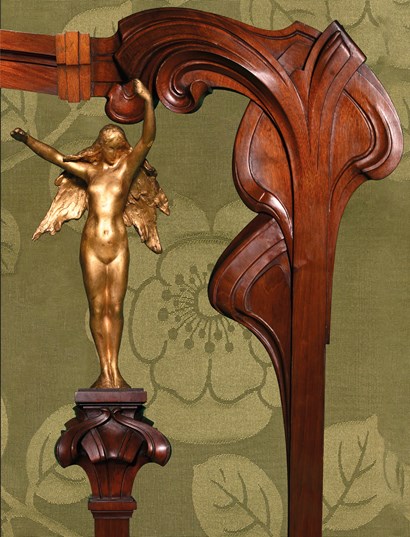
Galerie Marc Maison
Gilded plaster statuette by Pierre Braecke (Belgium, 1858-1938) surmounting a sideboard made by Victor Horta (Ghent 1861-1947 Brussels) Four original gilded plaster statuettes by Pierre Braecke surmount the pair of sideboards This is part of a interior decor made of a suite of three paneled rooms designed by Victor Horta for a private owner in Kortrijk and including two fireplaces, a pair of sideboards, a stained-glass ceiling and windows, a screen with period fabric Circa 1903 Mahogany, oak and maple, bronze, marble, american glass, fabric: moiré damask Surface: approximately 80 sq meters, H 3.80 m Provenance: Kortrijk, Belgium
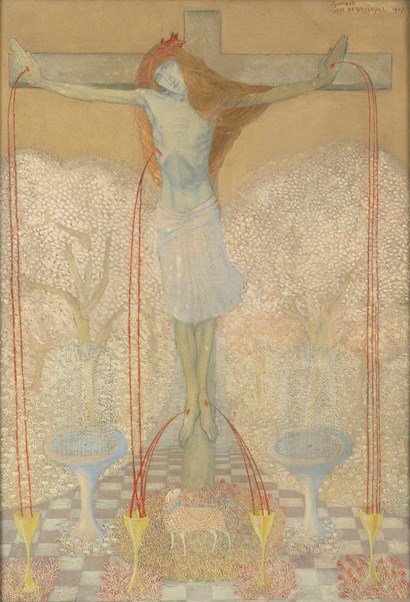
Galerie Oscar De Vos
gustave van de woestyne
Gustave Van de Woestyne (Ghent 1881-1947 Brussels) Christ in the spring garden, 1907 Oil on board 58 x 40 cm Signed and dated top right: GUSTAVE / VAN DE WOESTYNE 1907 Provenance: René Van Herrewege, Ghent; André Vyncke-Van Eyck, Ghent; Galerie Vanlangenhove, Ghent; Galerie Oscar De Vos, Sint-Martens-Latem; private collection, Belgium Literature: Borchert e.a., Van Eyck. Een optische revolutie (2020), pp. 456-457, p. 497, cat. n° 19.9 (ill.); Boyens, Sint-Martens-Latem. Kunstenaarsdorp in Vlaanderen (1992), pp. 265-266; Boyens, Een zeldzame Weelde (2001), pp. 24-25, p. 69, p. 211, cat. n° 77 (ill.); Boyens, Symbolisme in Vlaanderen (2022), p. 70, n° 60 (ill.); De Geest e.a., Gustave Van de Woestyne 1881-1947 (1997), p. 107, cat. n° 7 (ill.); Gepts, Gustave Van de Woestyne 1881-1947 (1981), p. 76, cat. n° 6 (ill.); Haesaerts, L'Ecole de Laethem-Saint-Martin (1945), p. 162; Hoozee e.a., Gustave Van de Woestyne (2010), pp. 62-63, cat. n° 8 (ill.); Langui, Gustave Van de Woestyne (1967), cat. n° 10; Pauwels e.a., De eerste groep van Sint-Martens-Latem 1899-1914 (1988), p. 101, p. 176, cat. n° 52 (ill.); Pauwels, Als een fonkelenden spiegel (2019), 178 (ill.); Schoonbaert, Religieuze thematiek in de Belgische Kunst 1875-1985 (1986), p. 147, cat. n° 47 (ill); Stubbe, De Vlaamse schilderkunst van Van Eyck tot Permeke (1953), pp. 364-365; Van de Woestyne e.a., Gustave Van de Woestyne 1881-1947 (1970), p. 24, cat. n° 13; Van de Woestyne, Gustave Van de Woestyne (1929), p. 3, cat. n° 7; Van den Abeele, Albijn Van den Abeele (1993), p. 187 (ill.); Vanbeselaere, Vlaamse schilderkunst 1850-1950 (1960), p. 39, cat. n° 112 Exhibitions: 1929, Brussels, Palais des Beaux-Arts, Gustave Van de Woestyne, n° 7; 1953, Ghent, Museum voor Schone Kunsten, Schilderijen uit Gentse Verzamelingen; 1960, Laren, Singer Museum, Vlaamse schilderkunst 1850-1950, n° 112; 1967, Mechelen, Cultureel Centrum, Gustave Van de Woestyne, n° 10; 1981, Antwerp, KMSKA, Gustave Van de Woestyne 1881-1947, n° 6; 1986, Brussels, Galerij ASLK, Religieuze thematiek in de Belgische kunst (1875-1985), n° 47; 1988, Brussels, KMSKAB, De eerste groep van Sint-Martens-Latem, n° 52; 1997, Deinze, MuDeL, Gustave Van de Woestyne 1881-1947, n° 7; 2001, Ghent, Museum voor Schone Kunsten, Een zeldzame weelde n° 77; 2010, Ghent, Museum voor Schone Kunsten, Gustave Van de Woestyne, n° 8; 2012, Deinze, MuDeL, Ecce Homo: de Heilige Bloedprocessie van Meigem; 2020, Ghent, Museum voor Schone Kunsten, Van Eyck. Een optische revolutie, n° 19.9
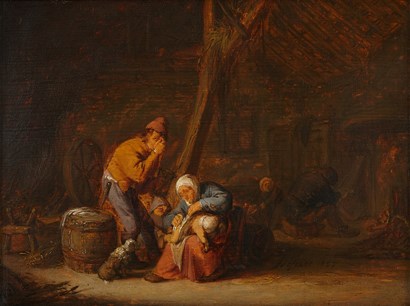
Floris van Wanroij Fine Art
adriaen van ostade
Adriaen van Ostade (Haarlem, 1610-1685) Interior of a barn with peasants-An allegory of smell Oil on panel 17 x 24 cm Signed and dated middle centre: Av ostade 1637 Provenance: private collection; Floris van Wanroij Fine Art; private collection, Remscheid, Germany Literature: Krol, A.E., Musée de l’Ermitage. Peinture de l’Europe occidentale. Leningrad (Hermitage), 1981, vol. II, p. 155 In his charming and amusing painting Adriaen van Ostade, like his contemporaries David Teniers the Younger and Adriaen Brouwer, depicted a scene from the everyday life of the peasant classes. At the same time it forms an allegory, that of the sense of smell. A variation on this composition by Van Ostade is kept in the collection of the Hermitage, Saint Petersburg (inv. n° 999)
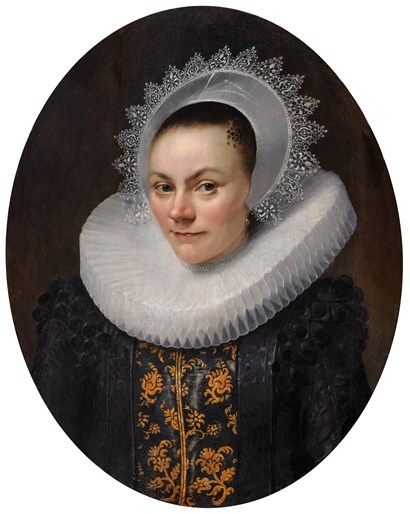
Klaas Muller
dutch school ca 1610
Dutch School Portrait of a Lady, circa 1610 Oil on panel, oval format H 62 cm To this day, no one has been able to identify the creator of this work. Based on the style of the clothes, we can date the work to around 1610 (the period when Rubens made his famous portrait 'The Honeysucle Bower' (circa 1609, Münich, Alte Pinakothek) showing himself together with his first wife Isabella Brant). Altough stylistically our portrait is closely related to Rubens double portrait, based on attire and jewellery, we should rather situate our portrait in the Northern Netherlands. The outstretched hairpin was meant to deter 'the evil eye'.
_BramBogart_T638300268673142255.jpg?width=410&height=2000&qlt=90&scale=both&mode=max&format=jpeg)
Rueb Modern and Contemporary Art
bram bogart
Bram Bogart (Delft 1921-2012 Sint Truiden) GeelBaanGroen, 1970 Cement and oil on panel H 101 x W 107 x D 12 cm Signed and dated: Juli 1970 twice Provenance: private collection, The Netherlands Exhibition: Sweden, Södertälje Konsthall, 28 March-18 April 1971, cat. ill. p. 2
_ChristoandJeanne-Claude_T638297599752649497.jpg?width=410&height=2000&qlt=90&scale=both&mode=max&format=jpeg)
Guy Pieters Gallery
christo and jeanne-claude .
Christo (Gabrovo 1935-2020 New York) and Jeanne-Claude (Casablanca 1935-2009 New York) The Floating Piers (Project for Lake Iseo, Italy), 2014 Pencil, wax crayon, enamel paint, photographs by Wolfgang Volz, technical data and fabric sample 66 x 43 cm Provenance: private collection Linda and Guy Pieters Certificate of authenticity n°308-11 recorded in the archives of the Estate of Christo V. Javacheff
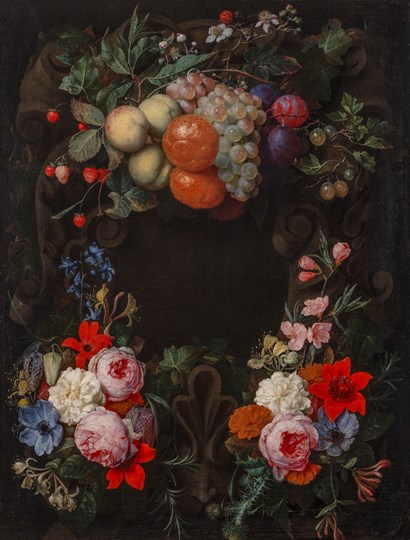
Klaas Muller
joris van son
Joris Van Son (Antwerp, 1623-1667) Flower and fruit garland around a cartouche Oil on canvas 65 x 50 cm Provenance: Queen Desideria of Sweden (1777-1860) Joris Van Son was a seventeenth-century Antwerp painter who was strongly influenced by the work of Jan Davidsz. De Heem (a Northern Netherlandish painter who was active in Antwerp in the 1630'ies). Together with Nicolaes Veerendael, Jan Van Kessel and Daniël Seghers, he was one of the main protagonists of Flemish (Antwerp) floral still life art from the mid-seventeenth century. Amongst his pupils were Frans van Everbroeck, Jan Pauwel Gillemans the Younger, Cornelis van Huynen, Norbert Montalie and Abraham Herderwijn. Van Sons preferred two important categories in the genre of flower and fruit still lifes: garlands ('cartouches') and so-called 'pronkstillevens' ('showy still lifes'). The 'cartouche' was often filled with the image of a Saint or a portrait. This by another painter, usually specialised in figures (for example Cornelis Schut, Erasmus Quellinus or Frans II Francken). The fact that our 'cartouche' remained empty in the center indicates that Van Son created this work as a coastal work 'in itself'. The quality is excellent and Van Son not only shows off his in-depth knowledge of the flora and fruits, but also his great sense of sensitivity, detail and colour. Striking is the powerful sculpted cartouche (with a male head bellow) in grisaille, in contrast with the bright fruits and flowers. This work has an interesting provenance: in the early nineteenth century it was owned by Desideria, Queen of Sweden and Norway (1777-1860).

Giammarco Cappuzzo Fine Art
Giuseppe Vermiglio (Milan, circa 1587-circa 1635/1636) The sacrifice of Isaac, circa 1610-1618 Oil on canvas 132 x 162 cm Provenance: private collection, Italy Literature: Alessandro Morandotti, Gli anni romani di Giuseppe Vermiglio, in Giuseppe Vermiglio. Un pittore caravaggesco tra Roma e la Lombardia, exhibition catalogue Campione d’Italia, Galleria Civica, 10 September-3 December 2000, ed. by D. Pescarmona, Milan 2000, p. 45, fig. 23; Ferdinando Bologna, Tre note caravaggesche, Prospettiva, 33-36, 1983-1984 (Studi in onore di Luigi Grassi), pp. 204-207, fig. 5; Mina Gregori, Il Sacrificio di Isacco: un inedito e considerazioni su una fase savoldesca del Caravaggio, Artibus et Historiae, X, 1989, p. 141, note 16

Gallery de Potter d’Indoye
Piat-Joseph Sauvage (Tournai, 1744-1818) and Sormany, Optician Empire oil on panel with barometer and thermometer, early 19th century Oil on panel, gilded bronze H 87 x W 112 cm Signed: Sauvage et de Sormany, Palais Égalité Provenance: collection of Hubert de Givenchy; Galerie Moatti, Paris, 1994 The rectangular panel painted in trompe l'oeil depicts the allegories of the four seasons beside a sheath surmounted by a globe flanked by two putti, the dial of the enamelled barometer is signed Sormany Palais Egalité, the thermometer inscribed in the sheath is signed Sormany Palais / Egalité n° 260, signed SAUVAGE in the plinth of the sheath, the frame is decorated with stars and stylised palmettes. This barometer-thermometer is a work of collaboration between Piat-Joseph Sauvage, painter and Sormany, optician. Piat-Joseph Sauvage, born in Tournai in Belgium, made a specialty of trompe-l'oeil paintingsat the end of the eighteenth and beginning of the nineteenth century. As a painter and decorator, he provided ornamentation for royal residences at the end of the reign of Louis XVI, such as Compiègne and Fontainebleau and the Hamlet of Marie Antoinette in Versailles, before turning to painting on porcelain and marble, working for the manufacture of Dihl and Guérhard then for that of Sèvres under the Empire. His compositions often represent friezes of putti, bacchanalia, mythological or allegorical scenes. The iconography of the Seasons developed here naturally refers to the function of this object, as a barometer and thermometer. Sormany was an optician installed in the Galerie de Bois of the Royal Palace (Palais Egalité under the Revolution and the Empire), as indicated by the inscriptions on the barometer and the thermometer. The old labels of this Sormany make it possible to describe its activity: "Palais Égalité n° 260 galerie de bois. / N° 260 Sormany opticien successeur de Catanyo vends toute sorte de lunettes (spectacle et autres) et tout ce qui concerne l’optique, mathématique physique et autres objets de curiosités, baromètres, thermomètres et pèse liqueurs. / Le tout à juste prix Paris." He seems to have been particularly recognised for his research on thermometers.
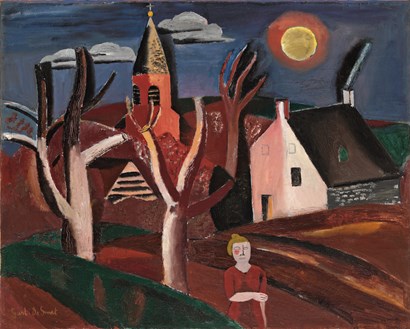
Galerie Oscar De Vos
gust. de smet
Gustave De Smet (Ghent 1877-1944 Deurle) Landscape with church, 1930 Oil on canvas 66 x 81 cm Signed lower left: Gust. De Smet Provenance: Galerie Le Centaure, 1932, lot 76, bought by Théo Bogaerts for Mr. Nijkerk; collection M.B.B. Nijkerk, Amsterdam; collection Dr. K. Nijkerk, Amsterdam; private collection, Brussels Literature: Haesaerts, Gustave De Smet (1936), n° 115; Langui, Gustaaf De Smet. De mensch en zijn werk (1945), p. 239, n° 432; Van Hecke & Langui, Gustave De Smet. Sa vie et son oeuvre (1945), p. 249, n° 428; Vanbeselaere, Gustave De Smet. Retrospectieve tentoonstelling, cat. (1961), p. 75, n° 147; Kikkert, Gustave De Smet 1877-1943, cat. (1978), n° 32; Milo, Vie et survie du Centaure (1980), p. 105, n° 76; Boyens, Retrospectieve Gust. De Smet (1989), p. 166, n° 120 (ill.); Boyens, Gust. De Smet (1989), p. 229, p. 399, n° 846 (ill.); Denninger-Schreuder, Vlaamse expressionisten (1993), p. 31 (ill.); Boyens e.a. , De maat der dingen (2003), p. 30 (ill.) Exhibitions: 1936, Brussels, Palais des Beaux-Arts, Gustave De Smet, n° 115; 1961, Antwerp, KMSKA, Gust. De Smet Retrospectieve, n° 147; 1973, Sint-Martens-Latem, Gemeentehuis, Latemse kunstenaars in Nederlandse verzamelingen, n° 13; 1978, Warmenhuizen, Oude Ursulakerk, Gustave De Smet, n° 32; 1989, Ostend, PMMK, Retrospectieve Gust. De Smet, n° 120; 1993, Kortenhoef, Kunst aan de dijk, Vlaamse expressionisten, 31; 2003, Deinze, MuDeL, De maat der dingen, n° 39

Chambre professionnelle belge de la Librairie Ancienne et Moderne (CLAM)
Jean Clair, Considérations sur l’état des beaux-arts. Critique de la modernité. Paris, Gallimard, 16 février 1983, 8to, semi-flexible bluish-grey calf boards with sanded flower (found as such) with sharp edges in head and tail and bordered at edge with a strip in black elephant skin. Relief strip at the joints of the same calf skin, printed with the burnt vein of a pine board, attached with stainless steel eyelets. Board on two thongs of black elephant skin. Grey faux lizard spine cover, natural edges (J. de Gonet, dated 1984) First edition This essay by Jean Clair (Paris, 1940) is the first true critique of artistic modernity. There was no large paper edition. The copy is dedicated by the author to the aesthete and music lover Claude Bernard (1939-2022): Pour Claude Bernard, Ces Essais, au Prince des perversions, à l’aimable tyran des peintres et au dernier des grands mécènes, dont le règne s’étend de la Rue à l’empire des Beaux-Arts, en espérant qu’ils affirmeront son pouvoir, et en hommage très cordial Jean Clair 17 juil. LXXXIII To Claude Bernard, These Essays, to the Prince of perversions, to the amiable tyrant of painters and to the last of the great patrons, whose reign extends from the Rue to the empire of Fine Arts, hoping that they will assert his power, and in very cordial homage Jean Clair 17 July LXXXIII And with a watercolour by Sam Szafran (1934-2019), signed and dedicated to Claude Bernard, with whom he exhibited for the first time in 1965, an event organised by Jacques Kerchache (1942-2001). His encounters with Kerchache, Jean Clair and Claude Bernard profoundly influenced his life as a painter. Claude Bernard seemed to enjoy bookbinding and commissioned works to Jean de Gonet and Monique Mathieu. Watercolour: 203 x 197 mm Provenance: Claude Bernard, Paris Literature: Le Bars (F.), Jean de Gonet. Catalogue raisonné, t. II, 1983-1993, 0379 (from which the description of the binding was borrowed) Librairie Lardanchet, Antiquarian bookseller

Studio 2000 Art Gallery
theo van rysselberghe
Theo van Rysselberghe (Belgium, Ghent 1862-1926 Saint-Clair, France) Le ruban écarlate, 1906 Red chalk on paper 110 x 88 cm Signed with monogram and dated: Fev. 06 Provenance: private collection, Belgium; auction Christie’s, Amsterdam, 22 May 1991, lot 526; G. Gieseler (?), 1973; Galerie Druet, Paris Literature: A. Dreyfuss, Die Kunst fur Alle, 29, 1914, pp. 508-538; P. Fierens, TVR, Brussels, 1937; R. Feltkamp, Théo Van Rysselberghe. Catalogue raisonné, n° 1906-011 (ill.); R. Feltkamp, Théo Van Rysselberghe: Schilder van de zon, n° 59 (ill.). Exhibitions: Rotterdam, Rotterdamse Kunstkring, TVR (cat. n° 70) 23 October-21 November 1909; Groningen, Galerie Hofteenge, Picture TVR (cat. n° 56), 16 January–2 February 1910; Laren, Singermuseum, Théo van Rysselberghe. Schilder van de zon, 17 May–4 September 2022

Klaas Muller
daniël seghers and cornelis schut
Daniël Seghers (Antwerp, 1590-1661) and Cornelis Schut (Antwerp, 1597-1655) Portrait of the Virgin and Child, supported by Cherubs with a Flower Garland Oil on canvas 127 x 104 cm Provenance: collection of Willem de Blasere, Lord of Hellebus, Ghent, circa 1635, and recorded in Seghers’ inventory as n° 135; Galerie Marcus, Paris, 1970-1974; private collection, Belgium Literature: Diary of Daniel Seghers in W. Couvreur, ‘Daniel Seghers’ inventaris van door hem geschilderde bloemstukken’, in Gentse bijdragen tot de kunstgeschiedenis, vol. XX, 1967, p. 112, n° 135; M.-L. Hairs, Pour un tricentenaire, D. Seghers, in revue Belge d’archéologie et d’histoire de l’art, Liège 1960; M.-L. Hairs, Dans le sillage de Rubens, les peintres d’histoire anversois au XVIIe siècle, Liège 1977, p. 213; M.-L. Hairs, The Flemish Flower Painters in the XVIIth Century, Brussels 1985, pp. 125–29, cat. n° 33, a detail reproduced p. 130; G. Wilmers, Corneli Schut (1597–1655): a Flemish Painter of the High Baroque, Belgium 1996, pp. 172–73, cat. n° A108, repr. p. 413 (erroneously as cat. n° A110); The golden age of Flemish painting. Taichung (Taiwan), 1988, p. 151 (repr. in colour) Exhibitions: Cologne, Wallraf-Richartz-Museum, 4 September–22 November 1992; Antwerp, Koninklijk Museum voor Schone Kunsten, 12 December 1992–8 March 1993; Vienna, Kunsthistorisches Museum, 2 April– 20 June 1993, Von Bruegel bis Rubens, n° 99.1; Taichung, National Taiwan Museum of Fine Arts, The Golden Age of Flemish Painting, 1988, n° 54 This collaboration between two important Flemish painters (Seghers painted the flowers, Schut was responsible for the putti and the cartouche) resulted in a beautiful painting with an exceptional story. Hairs related this work to work 'n° 119' from Daniel Seghers' inventory. This work was described in the diary of Philippe Chifflet (from the entourage of Cardinal Infante Ferdinand of Spain). Chifflet noted that Ferdinand visited Seghers in his studio where this work was presented to him (See: G. Wilmers, Corneli Schut (1597-1655): a Flemish Painter of the High Baroque, Belgium 1996, pp. 172-73). This is a great collaboration between two specialists in their genre: Schut's free 'Rubenesque' figuration is broken by Segher's hyperrealism and bright use of colour. Although the two painters retain their individuality and their own style, they reinforced each other in this work and built a composition together. (Schut and Seghers worked together several times during this period, resulting in several cartouches with putti).

Willow Gallery
Marc Chagall (Vitebsk 1887-1985 Saint-Paul de Vence) Flûtiste jaune et bouc dans l’arbre en fleurs, circa 1960-1964 Gouache, pastel, oil pastel and Indian Ink on paper 51 x 34 cm - framed: 70 x 53 cm Stamped with artist’s signature This painting is accompanied by a certificate of authenticity from the Comité Marc Chagall Provenance: estate of the artist; thence by descent
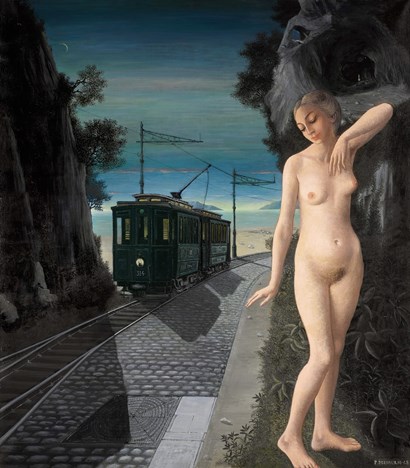
Opera Gallery
Paul Delvaux (Belgium, Antheit 1897-1994 Veurne) La Fin du Voyage, 1968 Oil on canvas 165.1 x 145 cm Signed: P. DELVAUX and dated 10-68 on the lower right; signed again, titled and dated: 1968 on the stretcher Provenance: Mr. and Mrs. Morton D. May, St. Louis, USA, by 1969; Marlborough Gallery, London; Don Bartolomé March, Madrid (until at least 1991); Christie's London, 3 February 2003, lot 168; Collection of Paul Yeou Chichong Literature: Jerrold Lanes, New York, The Burlington Magazine, vol. CXI, n° 794, May 1969, p. 325, ill.; Michel Butor, Jean Clair, Suzanne Houbart-Wilkin, Delvaux, Catalogue de l'oeuvre peint, Brussels, 1975, n° 309, p. 271, ill.; Jacques Sojcher, Paul Delvaux ou la passion puérile, Paris, 1991, p. 78, ill. Exhibitions: New York, Staempfli Gallery, Paul Delvaux, 1969, n° 15; Madrid, Fundacion Juan March; Barcelona, Funacio Caixa Catalunya and Florence, Pallazzo Corsini, Delvaux, 1998, n° 72, p. 113, ill. in colour © Foundation Paul Delvaux, Belgium/SABAM, 2023-2024

Röbbig München
nicolas petit (1732–1791, maître in 1761)
Nicolas Petit (France, 1732-1791) Ormolu mounted floral marquetry table "en chiffonnière" Paris, Louis XV/Louis XVI (Transition) period, circa 1770 H 68.5 x W 32.5 x D 25.5 cm Stamped 'N.PETIT' maître in 1761 and 'JME' Provenance: the Lesley and Emma Sheafer collection, Bequest of Emma A. Sheafer, 1973
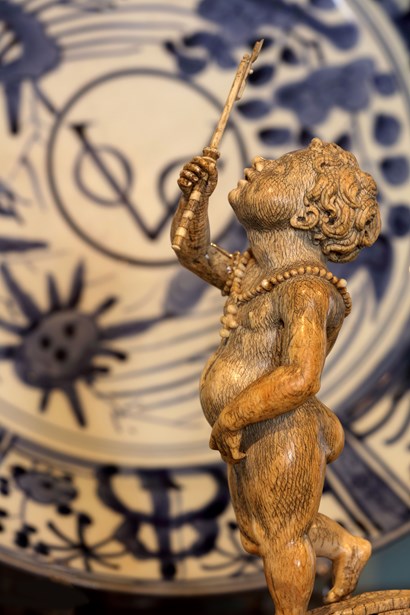
Zebregs&Röell Fine Art and Antiques
A Mammoth ivory figure of an African Amor Flanders or Southern Germany, 17th century H 17.3 cm Provenance: private collection, United Kingdom; with Peter Petrou, London This figure has many iconological meanings. With the bow and arrows, it is an Amor, but since the bow, the quiver of arrows and one single arrow are lying on the ground together with a shield, they may symbolise unsuccessful or fended-off love. The Amor playing with his penis and blowing a whirligig together may be symbols of the fickleness and transitoriness of love. The chain with a cross around his neck is a Roman Catholic symbol and may point to a Catholic country of origin, probably South Germany or Flanders.



